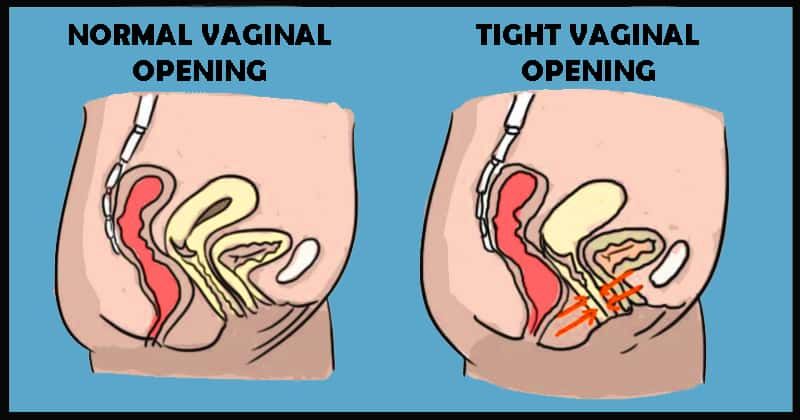
What is Vaginismus?
Vaginismus is the spasmodic, often painful contraction of the pelvic muscles and parts of the vagina.
Vaginismus is also called vaginal spasm but it’s not the same thing as vaginal atrophy – a lack of estrogen and the thinning of the lining of the vagina or vulvar vestibulitis – a condition responsible for dyspareunia (painful sex).
However, these conditions are similar to vaginismus, and they could make sexual intercourse painful.
Vaginismus is an involuntary muscle spasm that occurs in the area of the pelvic floor when during vaginal sex.
In fact, it makes it difficult to enter her and causes sharp pain in the woman during sexual intercourse.
Causes of Vaginismus
Do you have a muscle spasms in your private area and your boyfriend is not able to penetrate?
The pelvic floor and the vagina contraction are normal but the sharp pain as soon as your man wants to penetrate means something is wrong down there.
Even if the woman would like to have sex, sometimes, it is difficult to penetrate the vagina.
This happens when you’re trying to loosen a girl or also occurs to women that are already deflowered.
Some of the causes of vaginismus are the following.
- Stress and Anxiety
- Fear of sex
- Depression
- Childbirth injury
- Rape experience
- Surgery experience, especially around the genitals
- Your Man is huge down there
Types of Vaginismus
Vaginismus is more of a mental illness in women than a disorder and it’s very common in women.
There are 2 types or forms – Primary and secondary vaginismus.
- Primary vaginismus
The women or girls affected have not yet been able to have sexual intercourse.
Primary vaginismus is a result of the upbringing of the female child and the training that demonizes everything sexual.
As a result, the young girl cannot develop a natural relationship with her sexuality. But sexual activities (without penetration) or physical abuse of the child can also lead to vaginismus later in life.
Also, vaginismus occurs because the female is not pleased with the relationship or does not find the partner sexually attractive or compatible.
- Secondary vaginismus
This type of vaginismus is a result of past traumatic experiences or injuries of the affected woman (for example, surgery, abuse,, or rape).
In addition to abuse and injury to the woman, secondary vaginismus is often also based on the fear of injury itself (for example, pain is felt after sexual intercourse, which develops into vaginismus, and this is even common to pregnant women.
Vaginismus can be felt differently and affect women of all ages.
Treatment of Vaginismus
Vaginismus should be treated so the affected woman can have a fulfilling sex life.
While your partner should exercise foreplay before sex to enhance arousal and make you wet down there, this is not the solution for vaginismus.
If you’ve read this page from the beginning and you now realize you have vaginismus, the first thing is to consult your trusted gynecologist.
After examination from your gynecologist, the degree of vaginismus is determined and therapy can be recommended for the correction of vaginismus.
Your doctor can also refer you to a sex therapist or psychologist, especially if you have secondary vaginismus.
A vaginal dilator is another treatment option for vaginismus, in which the vagina is slowly expanded to accommodate the penis easily.
In the beginning, the woman should do this all by herself, without sexual pressure, and in a relaxed mood.
Your boyfriend or husband can join later, and under your instruction to insert the vaginal dilator, then he can insert his penis into your vagina slowly to engage in normal sexual intercourse.
Conclusion
Vaginismus can occur as a result of parenting in regard to sexual life and physical abuse.
It can be a trauma that causes vaginismus, but psychosocial factors are also often responsible.
Since women suffer from it, vaginismus should not be left untreated.
There are different forms of therapy and treatment measures to help to correct vaginismus.





